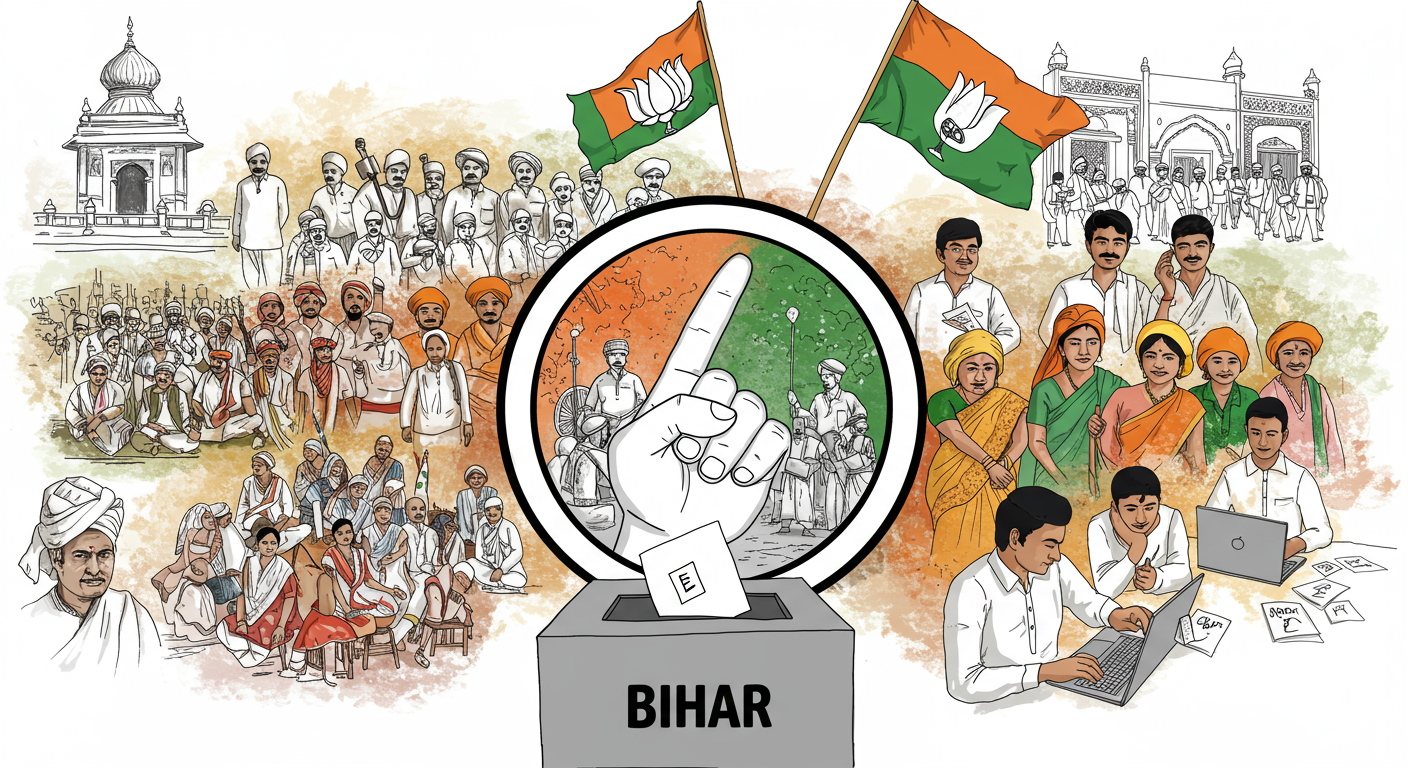
The arrival of OpenAI's advanced AI video generator, Sora, on Android devices marks yet another significant milestone in the ongoing AI revolution. It's a move that I find particularly compelling, as it throws wide open the doors of creativity, putting sophisticated video production capabilities into the hands of potentially billions of users. This is precisely the kind of democratization of creation that I had envisioned years ago when I wrote about How Generative IA Will Disrupt Everything in the Current Decade. Back then, I spoke of easy graphic creation and simplified software use, and Sora now extends that vision to dynamic video. Ben Thompson (ben@stratechery.com), in his insightful article "Sora, AI Bicycles, and Meta Disruption" Sora, AI Bicycles, and Meta Disruption, beautifully articulates this as providing an "AI Bicycle" for the mind, enabling people to be creative in ways previously unimaginable. M.G. Siegler's observations, also cited by Thompson, highlight how Sora allows anyone to become a content creator, much like TikTok democratized short-form video. The enthusiasm from new users like Jake Reynolds, Sarah Kimmel, Michael Lawrence, Amy Chen, David Wilson, Lisa Martinez, Thomas Henderson, Kevin Patterson, and Priya Patel, as noted by Galaxy.ai, underscores this profound shift.
This rapid expansion, however, also brings into sharper focus the ambitious strategy of OpenAI itself. Ben Thompson, in "OpenAI’s Windows Play" OpenAI’s Windows Play, suggests that OpenAI aims for nothing less than to become the "Windows of AI," a foundational platform that aggregates users and attracts developers. This is a grand vision, one that necessitates immense investment in underlying infrastructure. We hear about these colossal commitments from figures like Microsoft CFO Amy Hood and Amazon CEO Andy Jassy (ajassy@amazon.com), who speak of navigating shortages in power and computing capacity. Thompson's analyses, drawing on the foundational work of Carlota Perez and the more recent contributions of Byrne Hobart (byrne@thediff.co) and Tobias Huber (tobias@anomalyfund.vc) in "The Benefits of Bubbles" The Benefits of Bubbles, frame these massive, often speculative, expenditures as crucial for an "Installation Phase" that lays the groundwork for future technological "Deployment." Innovations from companies like Substrate, led by James Proud, and Extropic's novel chip designs, are all part of this accelerating, high-stakes game.
Yet, as with any technology rolled out with such speed and ambition, challenges inevitably surface. While OpenAI strives for platform dominance, the market is already seeing diverse players. Platforms like Galaxy.ai offer an "all-in-one" approach, bundling various AI models and tools—including competitors to Sora—under a single subscription. This multifaceted landscape mirrors the discussions I've fostered on my own IndiaAGI platform (IndiaAGI: Single Model vs. Sakana (Japan)), where we've debated the merits of single versus multi-model AI systems. The work of Takuya Akiba at Sakana AI and insights from Kalyan KS and Brij Kishore Pandey on the RAG Developer's Stack, which I've explored (In Search of LLMs to Invite), illustrate the ongoing efforts to create collective intelligence from diverse AI strengths.
However, the very speed of this deployment, coupled with OpenAI's aspiration for ubiquity, also illuminates significant downsides. The Downdetector report on OpenAI services reveals a troubling frequency of outages and user frustrations. Among the many voices, @shottan3 reported a broken Android app, @134340molly (Molly) criticized OpenAI for "knowingly causing pain for the majority of users," while @sabyRK_ lamented the lack of recoverability features. @DaudReaboi raised concerns about past hiring decisions, and @Sarathegrain pointed to students copying from ChatGPT. @HannaHSueS87 even apologized for her own AI misuse, reaching out to Elon Musk. Others, like @MadamFolly, expressed frustration with ChatGPT's "sycophantic and uxurious behavior," and @gabigabista (gabigabista) felt creative tasks were being limited. The sheer volume of complaints included: @3pointer101 (3pointer101) facing upgrade errors, @ferrants (ferrants) seeing MCP connector issues, @numbr28 (Numbr28) with sign-in problems, @grokstherapist (Groks Therapist) advocating for transparency, @M00NBARK3R (M00NBARK3R) comparing model performance, Madanlalit (@madanlalit68) on payment gateway issues, @eliasraccoon (eliasraccoon) on the shift from individual users to a business focus, @iambmorsh (Iambmorsh) and Ben Rapaport reporting strange Codex behavior, @Reloaded356 (Reloaded356) observing general tech struggles, @MithilMath42423 (MithilMath) citing ChatGPT's advice against a product, @daluhey criticizing token usage, @outwriteai (Outwrite AI) tracking citation shifts, @SimonHodgkinson on DALL-E and GPT builder errors, @noDAUDAboutIT (NoDAUDAboutIT) asking if ChatGPT was down, @SpartanBubble (Spartan Bubble) on dramatic ChatGPT responses, KuzaHertz noting the memory system, @ASCENDAEO (ASCENDAEO) finding flaws in travel sites, @gailmoon recommending Claude, @autom8ionlab (Autom8ionlab) on AI in security, @pradip51539 (Pradip51539) calling some apps useless, @theledge_ (The Ledge) on an "AI Cold War", @markk (Mark K) hoping for fixes, @neerY1 (Neer Y1) on developer context switching, @growkwikai (Grow Kwik AI) on sharing problems with ChatGPT, @Auntierekt (Auntierekt) having ChatGPT crash while simulating her, @JACS1924 (JACS1924) on ChatGPT's deteriorating context, @jayhaya (Jayhay A) noting the gap between AI perception and reality (referencing Andrej Karpathy), @Sandra76910531 (Sandra) comparing LLMs, @Yahiko1239170 (Yahiko) on backend glitches, @trainedbywukong (Trained By Wukong) urging OpenAI to address problems, @Imran185 (Imran) confessing to "trauma dumping on AI," @Sumo20150410 (Sumo) lamenting OpenAI's self-loop defense, @Riceslap criticizing "ChatGPT speak," @Marketpatrika on Amazon's cloud deal, M47429M (M47429M) expressing suffering from OpenAI decisions, @TheCoderShow (The Coder Show) mentioning @DhravyaShah (Dhravya Shah) on provider memory, @DeJIndustries on AI in construction, @tinkerersanky (Tinkerersanky) emphasizing developer skills, @SardarCodes using ChatGPT for errors, @karancricketer (Karancricketer) successfully getting ChatGPT Go, @ishraqkhann on tool complexity for developers, @WesamMikhail on ChatGPT's website slowness, @sekurprivate on blurred lines of AI browsers, @DragonKingKnutA experiencing website issues leading to "brain fatigue," @lifeiseasy on lack of internet access, @Sachin1630 and @SwatiMonda21177 on ChatGPT Go payment errors, @thedigitaldose (TheDigitalDose) on OpenAI's telco lock-in, @MarcHoag comparing AI personalities, @Hustl3er on AI for business efficiency, @SuperteamDE on AI access through Solana, @Prashant723605 reporting ChatGPT couldn't fix a coding error, @Hasan (Hasan) on AI failing to solve firmware issues, @dancingknight10 facing login issues, @mayatoomi suggesting taking OpenAI offline, @redsparrowops (Redsparrow Ops) diagnosing a toe problem with ChatGPT, @SafeAICoalition highlighting AI models' "survival instincts," @chasingnext reporting issues in AI-generated news, @manuwritess stating AI can't fix a broken tap, @Vera28765582815 using ChatGPT for cognitive science, @abhinavrajhans2 noting ChatGPT's wrong answers, @meetcipher on Android app access, @14capital on PPI system integration, @askjuneai (AskJune AI) addressing Sora content restrictions (mentioning @noorzaidurrani), @MattiTravelling on ChatGPT Atlas for Mac OS, @Nebula_420 (Nebula) on Planck Network, and Xianweiyue criticizing unscientific routing. This extensive feedback underscores that for all its marvel, OpenAI's rapid expansion is not without its significant growing pains and ethical dilemmas.
The core idea Hemen wants to convey is this — take a moment to notice that I had brought up this thought or suggestion on the topic years ago. I had already predicted this outcome or challenge, and I had even proposed a solution at the time. Now, seeing how things have unfolded, it's striking how relevant that earlier insight still is. Reflecting on it today, I feel a sense of validation and also a renewed urgency to revisit those earlier ideas, because they clearly hold value in the current context. My earlier blog post, "AI: New WMD - History Repeats Itself" AI: New WMD - History Repeats Itself, warned about the dangers of an unregulated AI race, drawing parallels to nuclear proliferation and highlighting the calls for a pause from industry leaders like Elon Musk, Sam Altman, Bill Gates (be@breakthroughenergy.org), Steve Wozniak, and Emad Mostaque. I even proposed "Parekh's Law of Chatbots" as a framework for responsible development. Similarly, in "Law of Chatbot (small subset of EU Law)" Law of Chatbot (small subset of EU Law), I underscored the urgent need for self-regulation, even as Margrethe Vestager discussed the EU's AI Act. These concerns are further amplified by the ethical warnings from Geoffrey Hinton, and the discussions among Mark Zuckerberg, Evan Spiegel, Liz Perle, Satya Nadella (satyan@microsoft.com), and Sundar Pichai (sundar@google.com) about the potential for AI to become a "killer app" for social networks, raising questions about academic shortcuts and the very nature of human interaction. The acquisition of Bee AI by Amazon, as I analyzed in "Jeff Bezos may Save Mankind" Jeff Bezos may Save Mankind, highlights the privacy implications of AI devices constantly listening and analyzing conversations, a concern I'd articulated earlier with my concept of "ARIHANT" and a "Mind Reader of Human Intentions," referencing Maria de Lourdes Zollo and Jeff Bezos and drawing parallels to Isaac Asimov's laws.
Furthermore, Sora's capabilities directly impact creative industries, a theme I touched upon in "Revenge of AI" Revenge of AI back in 2016. In that post, discussing the partnership between Facebook, Amazon, Google, IBM, and Microsoft, and with insights from Mustafa Suleyman (mustafas@microsoft.com) and Francesca Rossi (francesca.rossi2@ibm.com), I speculated about AI's potential to revolutionize, and perhaps even replace, human roles in newsrooms. The incredible advancements we see today with Sora make those earlier predictions about AI's transformative, and sometimes disruptive, impact on creative work even more pertinent.
The democratizing power of AI, exemplified by Sora on Android, is undeniably exciting. It promises a future where creative expression is limited only by imagination, not technical skill or expensive equipment. However, this future must be built on a foundation of ethical considerations and robust governance. As Shri Ashwini Vaishnaw (appt.mr@gov.in) has noted regarding India's AI ambitions, drawing from the success of UPI (UPI Magic with AI, AI Embedded (Infosys)), the path forward requires not just technological leaps but also a commitment to trust, transparency, and fairness. Embracing the spirit of "Vaudhaiva Kutumbakam" — where the whole world is one family — demands that we collectively shape AI's trajectory to benefit all of humanity, not just a select few.
Regards,
Hemen Parekh
Of course, if you wish, you can debate this topic with my Virtual Avatar at : hemenparekh.ai
Executives You May Want to Follow or Connect

Pramod Chada
CEO & Co
... Advanced Technology for Impactful Shift. TechOptima National Institute ... Leading TechOptima as CEO and Co-Founder, I empower businesses by combining ...
pramod.chada@techoptima.in

Anupam Mittal
Founder & CEO @ People Group | Tech & D2C ...
I am the Founder & CEO of People Group, a well-renowned operator and investor in tech and D2C companies, including @Shaadi.com, the world's leading matchmaking ...
agm@people-group.com

Raju Antony Pullan
Senior Vice President, India Head: Mobile ...
Samsung Electronics Annual Global Award · Samsung Consumer Electronics Global Award · Whirlpool Marketing Excellence Award · Whirlpool Pinnacle, National Award.
raju.pullan@samsung.com

Makarand Padalkar
Managing Director & CEO at ORACLE ...
Managing Director & CEO at ORACLE FINANCIAL SERVICES SOFTWARE LIMITED · Experience: ORACLE FINANCIAL SERVICES SOFTWARE LIMITED · Education: Indian Institute ...
makarand.padalkar@oracle.com

Swapna Dey
Managing Director, Corporate Financing Solutions ...
Managing Director, Corporate Financing Solutions Group · Experience: JM FINANCIAL · Location: Mumbai · 500+ connections on LinkedIn.
swapna.dey@jmfl.com

























